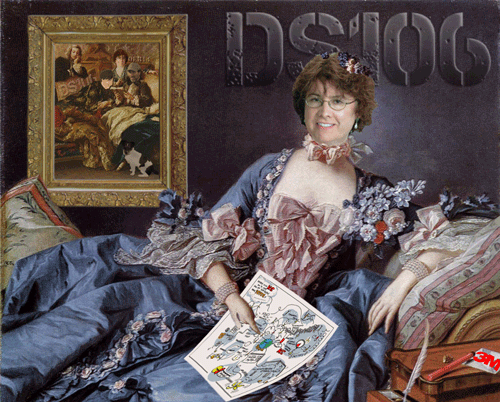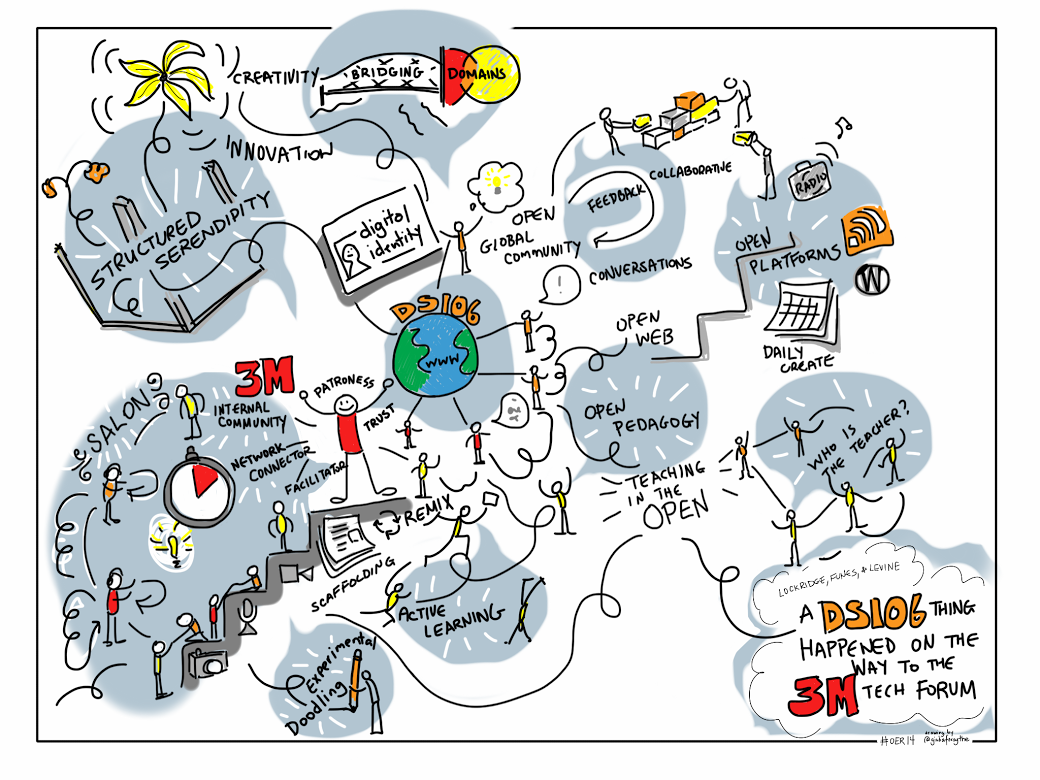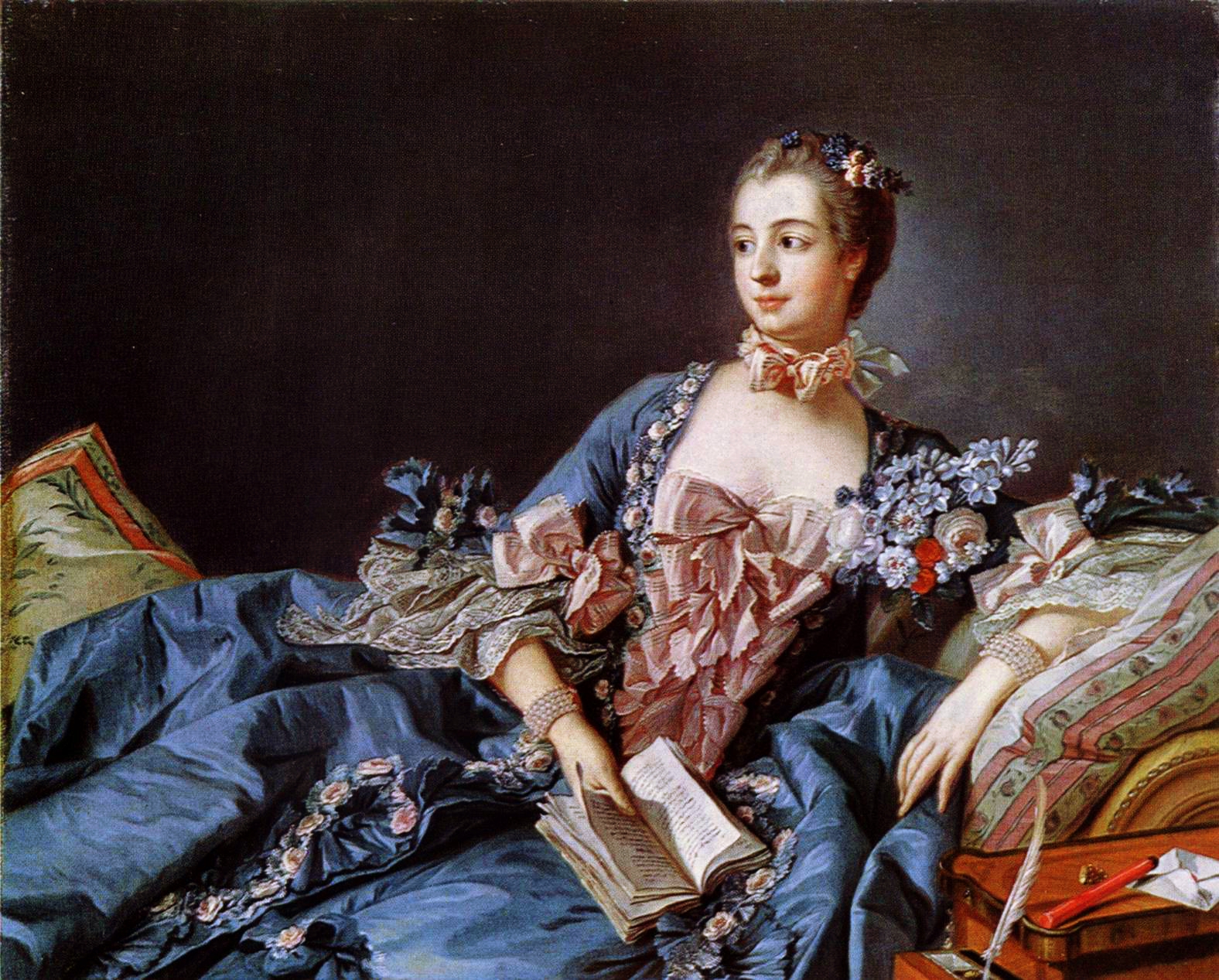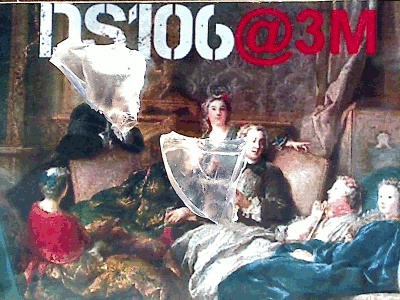
DS106 ROCKS! 3M-DS106 Salon Patroness admiring the work of her co-collaborators for their OER14 paper.
If you’ve been following my communications out to the world over the last few days you know that the OER14 paper, “A DS106 Thing Happened on the Way to the 3M Tech Forum” that Alan Levine, Mariana Funes and I were writing was joyfully submitted on 2/27/14. We’ll be presenting our 3M-DS106 Salon work at the end of April in Newcastle, UK. (Link to keynote speakers and panel members) For more see my post 3M+DS106+P2PL=OER14+M2M, which includes a video I created from interviews with the 3M participants and the original abstract for the paper.
#ds106 @cogdog @mdvfunes & me having fun, lounging in Salon. #OER14 paper submitted today. Presenting 4/28 in UK. http://t.co/ZtdGhIBo9p
— Rochelle Lockridge (@Rockylou22) February 27, 2014
3M #DS106 Salon Patroness appreciating art made by @giuliaforsythe 4 #OER14 paper. @cogdog @mdvfunes @jimgroom http://t.co/gR07VS5Ozg
— Rochelle Lockridge (@Rockylou22) February 28, 2014
The Art used for making the “art”:
With my focus on writing the paper (and my paying job at 3M that is making all of this possible) I haven’t taken much space to create something just for fun. As soon as the paper finished I jumped back into the “art” game and used the opportunity to show my appreciation for my ‘partners in crime’: Alan Levine, Mariana Funes, and Giulia Forsythe. (Who at our hopeful request in the final week, does what she does best, doodled a wonderful image to capture the paper beautifully.)

“A DS106 Thing Happened on the Way to the 3M Tech Forum” illustrated by Giulia Forsythe (@GiuliaForsythe on Twitter)
As usual, ideas emerged and morphed as I was in creation mode. The first image created was of the three of us enjoying our time in the Salon. It was sparked by an innocent comment from Mariana on the final draft of the paper and the resulting Twitter DM exchange.
MF: This is now icing on cake – but did you not have a wonderful photo of the Patroness in the days of yore in one of your posts? Could we add it here? And gif it? No. Kidding.”
RL: Thx for final comments. Especially reference comments at end. Are you truly serious about inserting the Salon GIF into our paper?
MF: I would love it. You think it is too much? It would be still for printing but could be a lead in to gif 4 work? or the 1 with work process? would be nice to have something stand out in the dull dull proceedings 🙂 it is a work thing for u so yr call!
There were many layers and tools used in re-making the paintings. All were produced in Adobe Photoshop CS5. The more advanced transformation tools available over Photoshop Elements allowed me to do things like warp the little red 3M on the envelope on the side table and Giulia’s doodle seen in the lap of the Salon Patroness, Madame de 3M106 .
I was fortunate to already have Colin the Dog (seen at our feet), and our three heads cut out from previous projects. The biggest issue that took A LOT of time futzing around was matching the color and texture of the new heads to the rest of the painting. With these two projects I’ve (rather painfully) moved beyond the novice stage of applying layer mask effects. It’s easy once you get it – sort of like making a GIF. But up to this point it was more of an accident than a purposeful action. See that little check box (Which pops up when you are creating a new layer.) next to “Use Previous Layer to Create Clipping Mask”? We are now best friends.
Not yet totally familiar with all of the layer effects and filters, I just kept trying stuff out until it looked sort of like I wanted. I’m not 100% satisfied with the results, but it’s a long way from when I first started. (Nana-Tina-Little Alan REDO) I still need more practice. Look closely and you’ll also find DS106 on the back of the couch on the left side of the portrait and an OER14 on the right side of the mantle.
But I really like the efffect of the rocking DS106. This was one of those instances of serediptity. I wanted to turn the still image into a GIF. Nothing in the new image stood out as a piece that could be GIFed without what looked to me a lot of work. I decided to try making the DS106 flash. Again, playing around with the layer style effects I ended up with some modified images that would give the original flashing illusion I was intending. But stepping back and taking another look, I noticed something I wasn’t expecting. It turned out that creating the animation frames by turning off and on the layer effects of drop shadow, satin and emboss, it gave the DS106 the illusion of rocking in 3D behind my head. I love it when these things happen.
Mariana explains this well in an early draft of our OER14 paper. (We had to reduce the word count from 6,000 down to 3,500. A lot of good stuff was left on the cutting room floor.)
Default open cultures generate the environment needed for innovation and creative thought. Zweig (2011) suggests that generating an environment that enables ‘structured serendipity’ may help us be more creative. From a cognitive perspective, Funes (2003) research suggests creative thought has at its core ‘bridging’ activity; creativity happens at the point of discontinuity when bridging from one domain to another. DS106 teaches bridging through an environment of structured serendipity via its focus on what Rheingold (2014) describes as ‘product orientation’ but is referred to in the DS106 open community as ‘Just make art, damn it!’
Credits for DS106 ROCKS!
Original painting: ‘Madame de Pompadour’ by François Boucher
Wall Painting Riff:
I cut out the center section of this original painting by Jean François de Troy (Paris 1679 – Rome 1752), “Reading from Molière” around 1728 found on Salon (gathering) Wikipage

Jean François de Troy (Paris 1679 – Rome 1752), “Reading from Molière”
I use a riff of this painting as the 3M-DS106 thumbnail image.
Side Note:
I was formatting references for the paper for 6+ hours all told. I’m going to get as much mileage out of that tediously boring work as I can.
- Funes, M. (2003). Bridging: The Essence of Creativity. In: Proceedings of the 7th European Conference on Creativity and Innovation. Jon Buijs, Remko van der Lugt, Han van der Meer (Eds.)
- Zweig, J. (2011). Structured Serendipty. THE WORLD QUESTION CENTER 2011. Retrieved from: http://www.edge.org/q2011/q11_2.html – zweig
- Rheingold, H. (2014). DS106: Enabling Open, Public, Participatory Learning. Connected Learning. Retrieved from: http://connectedlearning.tv/case-studies/ds106-enabling-open-public-participatory-learning




DS106 Rocks! http://t.co/1yq9wKuI2m
How I ‘Just Made Art!’ post for #ds106 in celebration of #OER14 paper submission. @mdvfunes @cogdog @giuliaforsythe http://t.co/PXHHqDuSl4
3measured